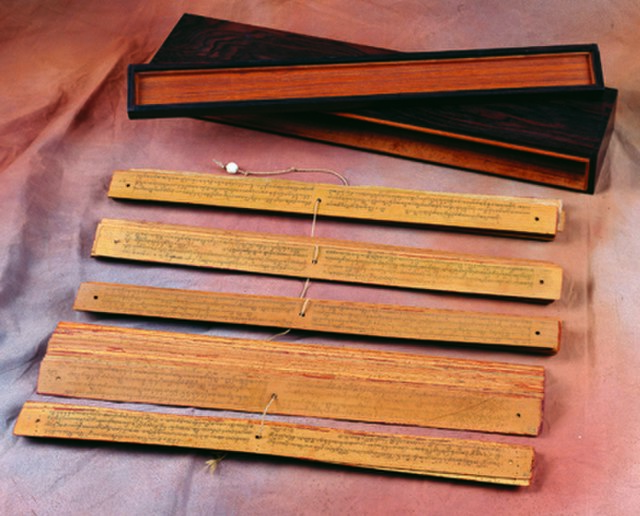Wayang, also known as wajang, is a traditional form of puppet theatre play originating from the Indonesian island of Java. Wayang refers to the entire dramatic show. Sometimes the leather puppet itself is referred to as wayang. Performances of wayang puppet theatre are accompanied by a gamelan orchestra in Java, and by gender wayang in Bali. The dramatic stories depict mythologies, such as episodes from the Hindu epics the Ramayana and the Mahabharata, as well as local adaptations of cultural legends. Traditionally, a wayang is played out in a ritualized midnight-to-dawn show by a dalang, an artist and spiritual leader; people watch the show from both sides of the screen.
Wayang
Wayang kulit performance by the famous Indonesian dalang (puppet master) Manteb Soedharsono, with the story "Gathutkaca Winisuda", in Bentara Budaya Jakarta, Indonesia, on 31 July 2010
Blencong, a Javanese oil lamp in the form of the mythical Garuda bird for wayang kulit performances, before 1924
Palm leaves manuscript of kakawin Arjunawiwaha is written by Mpu Kanwa in 1035 CE
Gamelan is the traditional ensemble music of the Javanese, Sundanese, and Balinese peoples of Indonesia, made up predominantly of percussive instruments. The most common instruments used are metallophones and a set of hand-drums called kendang, which keep the beat. The kemanak, a banana-shaped idiophone, and the gangsa, another metallophone, are also commonly used gamelan instruments on Bali. Other notable instruments include xylophones, bamboo flutes, a bowed string instrument called a rebab, and a zither-like instrument called a siter, used in Javanese gamelan. Additionally, vocalists may be featured, being referred to as sindhen for females or gerong for males.
A gamelan player playing bonang. Gamelan Yogyakarta style during a Javanese wedding.
Gamelan musical instrument
Musicians performing musical ensemble, The 8th century bas-relief of Borobudur Temple, Central Java, Indonesia
Gamelan is mentioned in the Kakawin Nagarakertagama in a palm-leaf manuscript called lontar that was written by Mpu Prapanca in 1365 AD. A collection of National Library of Indonesia in Jakarta








